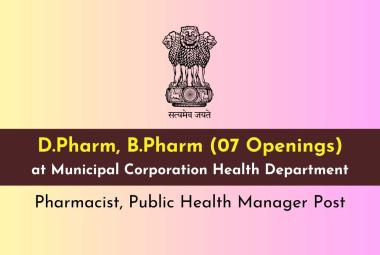{ DOWNLOAD AS PDF }
ABOUT AUTHORS:
Rahul Kumar*, Ved Prakash Singh, Damini Maurya, Anand Kumar Pandey
Department of Biotechnology, Institute of Engineering and Technology
Bundelkhand University, Jhansi, Uttar Pradesh, India
vnsanand_9@rediffmail.com
ABSTRACT
Nanoparticle, a core of bio-nanoparticle, which is used for polymers including natural and synthetic polymer and form different types of, liposomal and polymer nanoparticle. The designing, synthesis and manipulation of structures which is smaller than 100 nm, is termed as Nanotechnology. Nanoparticles are developed as a colloidal structure, synthesized by semi-synthetic and synthetic polymers. The emerging area of nanotechnology and Nano-sciences are the application of nanoparticles, ranges in 1 to 100 nanometre (nm). The synthesis of silver nanoparticles for their potential application, it was originate to be eco-friendly and reliable, because of their exclusive properties. Mostly synthesis of AgNPs, by physical and chemical methods are too expensive, toxic, hazardous chemicals for various biological risks.The main objective of this study preferably lies that green synthesis of AgNPs by several plants and its metabolites, extracts can be much safer to handle and easily available. The synthesis of AgNPs are using several plants extract such as Oryza sativa, Zea mays, Basella alba, Helianthusannuls, Camellia sinensis ( green tea), Azadirachta indica (neem) ,Ssebania drummondii (leguminous shrub)sp. The AgNPs get attached in the cell wall of microorganism and can disturb the cellular respiration, permeability of the cell wall. Sometimes it can penetrate inside the cell wall which can interact protein, DNA, sulphur and phosphorus and causing cellular injury inside cell. It confers the antimicrobial activity. The AgNPs shows less antimicrobial activity against gram positive bacteria in comparison to gram negative bacteria because gram negative contain β-barrel proteins (i.e. Porins) and thinner peptidoglycan. The distinguishing property of silver nanoparticles it can be have higher surface area to volume ratio. When surface area increases the catalytic activity and surface energy of AgNPs corresponding to increase and biological effectiveness also increases.
It identified that amalgamation of silver nanoparticle biochemical process is very fast process as compare to using microorganism (even several hours to few days). The NPs monodispersity, size are significant part in the valuation of NPs amalgamation. Therefore, operative regulator of monodispersity and NPs size are essentially examined. On numerous readings silver nanoparticle synthesis by microbes can be decompose later with assured dated of time. Thus the constancy of nanoparticle produce biological approaches merits supplementary learning.
INTRODUCTION
Nanotechnology gives the idea to control the desired and specific properties of material by regulation of their size, and this aspect driven the researchers in the field of specific use of nanomaterial. Over the past few years the synthesis of nanoparticle provide huge area for researchers because of carrying the potential and specific application in medicine, drug delivery an designing, development of sensors, and storage of information. The controlling reduction in dimensions of the nanomaterial provide the pronounced effects on the physical properties of material which differs to the material present in the bulk form.Nanotechnology provides important field of researches, photo electrochemical application development and synthesis of drugs, optoelectronics, catalyst, single electron transistor, light emitters, biomedical sciences tools, and energy sciences.[1]
The main concern of nanotechnology is to synthesize the nanomaterial of various composition, size and shape. There are various processes to synthesize the nanoparticles such as chemical reduction method, photochemical reduction method (pulse radiolysis), evaporation condensation process, laser ablation process, photo induced reduction, electrochemical synthesis, micro emulsion process, green synthesis and many more is used effectively. But there are several reducing agent are used for the synthesis of nanoparticles, which impart harmful effect on the environment and humans. These chemicals causes several hazardous waste in the environment. These are the reasons for that the chemical and physical method of nanoparticle synthesis is less common in implementation. Green synthesis involves the use of microorganisms, plants extracts, and non-toxic chemicals which provides a safer and effective way to produce nanoparticles. Green synthesis methods have the great potential for synthesis of nanoparticles. Green synthesis of nanoparticle is a cost effective and eco-friendly process in which not any hazardous material is produced. The recent applications of nanoparticles are introduces day by day.[2] The metals such as silver, platinum, gold, palladium are generally used for preparation of nanoparticles. Green approach for synthesis of nanoparticles is most preferred and specialized process than chemical and physical process of nanoparticle synthesis because it involves the reduction of the use of the toxic chemicals and metals. The area of nanoparticles application is develop day by day, there are several field of the application of nanoparticles such as antimicrobial, antioxidant medicine, anticancer and other various industrial purposes.[3]
METHODS FOR NANOPARTICLE SYNTHESIS
Two approaches are frequently used for nanoparticle synthesis these are top down and bottom -up method
Top-down approach
As shown in figure 1Bulk material is broken down into particles at nano-scale with various lithography techniques or milling and grinding process.

FIGURE1: TOP-DOWN APPROACH
Bottom- up approach
Bottom-up approach Atoms self-assemble to new nuclei which grow into a particle of nano-scale. The figure 2 is compatible representation of the bottom- up approach.

FIGURE2: BOTTOM- UP APPROACH
Plant extract is used for synthesis of AgNPs the plant reduction of metal compound into respective nanoparticles by photochemical reducing or antioxidant agent. The chief reaction occurs is oxidation/reduction hence it is kind of bottom up approach for biosynthesis of silver nanoparticles.[4]As shown in figure 3 there are three considerable methods for synthesis of nanoparticles.
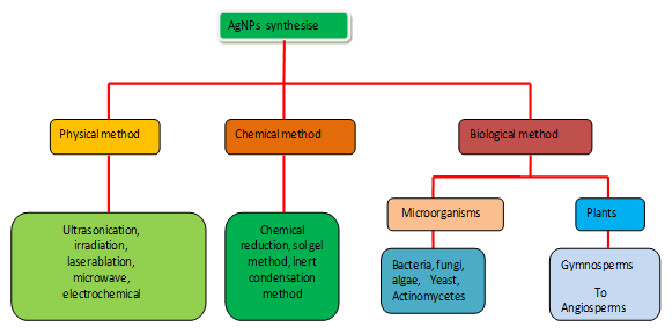
FIGURE 3: METHODS INVOLVING NANOPARTICLE SYNTHESIS
GREEN SYNTHESIS OF DIFFERENT NANOPARTICLES
There are numerous techniques can be developed day by day for the easier and effective synthesis of the nanoparticles. There are basic three techniques used for synthesis of nanoparticles which are physical method, chemical method, and biological method. The main aspect to synthesize the nanoparticles is development of reducing agents and capping agents. In the physical and chemical method of synthesis, highly toxic and hazardous chemicals used as the reducing and capping agents. These chemicals are responsible for the cause of defects in the environment. So these methods are generally not beneficial and applicable for human purposes. But in the biological method, biologically developed substances or chemicals used, which is non-toxic and beneficial as environmental consideration. The most acceptable process of synthesis of nanoparticles is the green synthesis. In green synthesis of nanoparticles extract of various microorganism and plants can be used.[5]The reducing and capping agents are also derived biologically, so it is most effective and less harmful process. This process does not impart any hazardous effect on the environment.By the help ofgreen synthesis the silver nanoparticles are produced which is 20- 25 nm in diameter. The nanoparticles shows various interesting morphology when amylopectin-rich waxy starch is used under hydrothermal condition.[3]Nanoparticles shows several important features and have effective biological applications. Green synthesis of nanoparticles is the method where aqueous extracts of plants have the great potential in silver nanoparticle synthesis, which are widely used and acceptable as desired therapeutic agents.[1]Biological synthesis of nanoparticles is an eco-friendly and non-toxic process. There are several reducing agents are used such as starch, microorganisms extract are the alternative of the toxic chemicals. The increasing application of nanoparticles in daily life can be fulfilled by this green path which is economic and not a hazardous process. Now a days there are several effective application of AgNPS can increase the production of nanoparticles by green chemistry.[3]
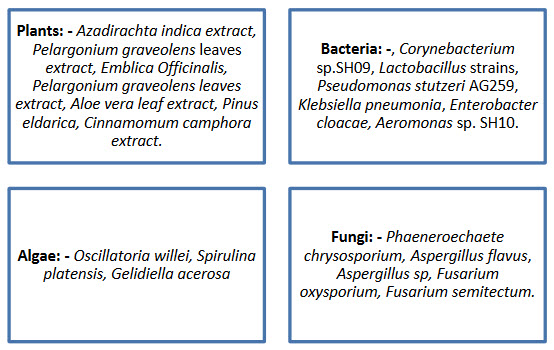
FIGURE 4:NANOPARTICLE PRODUCING BACTERIA, FUNGI, ALGAE AND PLANT SPECIES
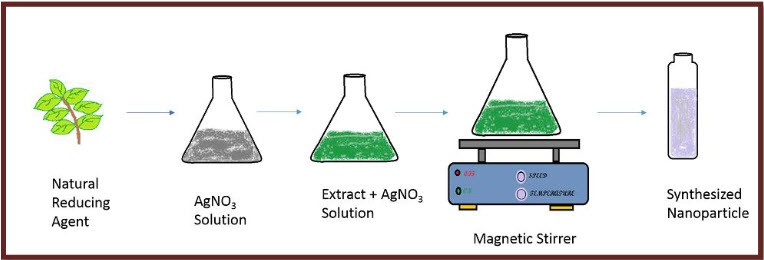
FIGURE 5:SCHEMATIC REPRESENTATION OF THE GREEN SYNTHESIS OF NANOPARTICLES
RESULT
Colour
The nanoparticles formation starts after addition of metal solution to the aqueous extract and incubated for 24 hours. As the figure 5 elaborates the steps of the nanoparticle synthesis. The reddish brown colour was observed after the incubation and it might be due to the formation of metallic nanoparticle.[6] The phenol and flavonoid contents in the supernatant after the green synthesis of nanoparticles were found to be less than the crude aqueous extract.
Spectroscopic Analysis
For the characterization of the nanoparticles spectroscopy can also be used. The scatter or absorption percentage measured by relative extinction spectrum directly depends on the composition, shape, size, and aggregation state of sample. The given equation shows the relationship between absorbance and time at different wavelength.
A α T
Here: A = Absorbance, T = time
XRD Analysis
XRD technique is useful for the estimation of elemental analysis of single molecule which is a particle of polycrystalline molecule. A single x- ray beam imparts on the sample and the scattering of the beam can be studied for the elemental analysis. The x-ray which are scattered can interfere each other, this interference can be demonstrated by the Bragg’s law which is helpful for the characterization of the molecules and polycrystalline.[3]
Size Analyser
A nano particle size analyser is used to determine the size of individual particles as well as a size distribution range for a given sample. The pharmaceutical industry uses nanoparticle size analysers because the size and shape of a particle can affect how a medication works in the body. Nanoparticle size analysers can measure particles in many ways including light scattering, laser diffraction, photon correlation spectroscopy, and sedimentation.
TEM and SEM are size analyserused in size analysis of nanoparticle. For nanoparticle synthesis plant extract as well as microbial culture can be used which work as reduction mixture. After reduction metal nanoparticles precipitate at the bottom of conical flask. This precipitate was washed out twice with double distilled water and then analysed by employing TEM. The samples of metal nanoparticles synthesized using plant extract or microbial liquids were prepared by placing a drop of reaction mixture over copper grid and allowing water to evaporate. The 20-50 nm sized silver nanoparticles were observed. The SEM images show distinctly the high density silver nanoparticles synthesized by C. tropicum and F. oxysporum.
APPLICATION OF BIONANOPARTICLES OVER NANOPARTICLES
The metals and macromolecules impart different characteristics as compare to their nanoscale characteristic and application. The nanoparticle possess unique and specific properties so it is frequently used. The required characteristics of nanoparticles is demonstrated as the occurrence of high surface to volume ratio. This phenomenon is helpful for the research areas where the large surface area are crucial for success. In the field of medicine and catalysts, it is easily demonstrated that higher surface to volume ratio is helpful for designing and targeting of chemicals. Numerous nanoparticles achieves their success in the field of antimicrobial activity, some of them able to reduce bacterial infections and act as antibacterial agents.[7]
Gene Delivery by Nanoparticles
Polynucleotide vaccines contains transfer of genes to encoding specific targeted antigens of host cells, where those genes are expressed, and produce the antigenic proteins and this process initiate the immune response on the host system. DNA is the main constituent of the polynucleotide vaccines. If plasmid DNA can be loaded on the nanoparticles then these nanostructures are efficiently work as gene delivery complex due to their specific targeting and degradation activity.[8]
Drug delivery into brain by nanoparticles
The factor which limits the development of chemicals or new drugs in the central nervous system in brain is blood brain barrier (BBB). There are tight junctions, active efflux transport system and enzymatic activity characterized by endothelial cells which is relatively impermeable. This barrier prevents the transfer of hydrophilic molecules from blood circulation to the central nervous system and effectively reduces the concentration of lipid- soluble or hydrophobic molecules in the brain by the efflux pumps. Thus the blood brain barrier is only permeable for the molecules essential for the functioning of brain.
For the targeting of nanoparticles in the brain the interaction with receptor mediated transport system on the blood brain barrier is essential. The polysorbate 80/ LDL, cell penetrating peptides, lactoferrin, transferrin receptor binding antibody (e.g. OX26) and melanotransferrin have the capabilities of delivery of non-transportable drugs with in the brain by the chimeric constrict that is responsible for if lipophilicity increase then it also regulated.[9]
Biosensors
Nanoparticles possess the specific electrochemical properties by which they can be remarkable factors for the nanoscale biosensor development. These biosensors have the faster response against time and have lower detection limits. In figure 6 the demonstration of the nanoparticles as biosensors can be described. The gold micro-patterned electrodes coated with silver nanoparticle on the surface of alumina shows the high sensitivity with Hydrogen Peroxide.[10]
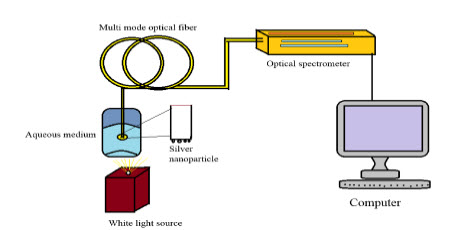
FIGFIGURE 6: SILVER NANOPARTICLES AS BIOSENSOR
Biosensor is devices responsible for some chemical changes, find signalling and chemical in solution. Transducer defines sensitivity because of conversion quantifiable signal through chemical signal. Different types of biosensor are available depends upon bimolecular recognition such as nucleic acid biosensor, antibody biosensor. This biosensor detects analytes which attached on the surface of biosensor by key and lock mechanism and find in solution analytes concentration, colour, and mass. Nanoparticle that use in this devices silica nanoparticle, magnetic beads, soccer ball. Carbon nano tubes and nanowire are used for sensing. Sensor fabricates by a semiconductor materials and advance because of its special conducting properties.
Cancer Treatment
The nanoparticles can be easily and effectively targeted on the tumors, and the success rate is more than chemotherapy and radiation therapy. Because nanoparticles can penetrate tumors at their inner cell mass where the oxygen concentration is negligible and the loaded drugs can easily impart their effect on the tumours.[11]The possible reimbursement of nanoparticle cancer healing are very much discriminating and very fast tumor demolition with nominal destruction to neighboring in good physical shape tissue. Drugs transported by this approach is quite a few minute supplementary intoxicating then customary treatments. The eradicated entirely of mice and tumors size reduce of when the permutation AuNPs subsequently X-ray therapy.[12]As shown in figure 7 the nanoparticles have remarkable properties for the treatment of cancer.
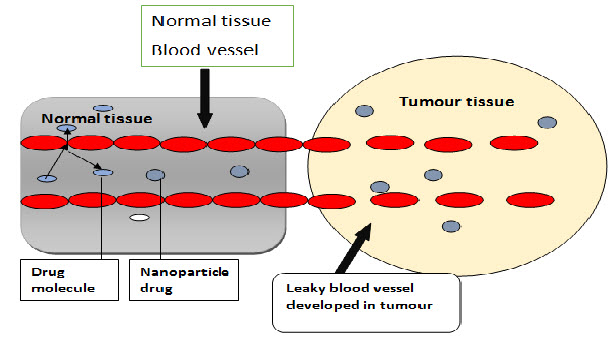
FIGURE 7: NANOPARTICLE ACCUMULATION IN TUMOUR TISSUE
Diagnostic Tool
In recent years nanoparticles can be coated with desired compound and targeted for specific recognition sites. By this process these nanoparticles can also be used as diagnostic tools for some diseases such as cancer and HIV. Nanoparticles possess several unique properties like conductivity, calorimetric, and non-linear optical property which induced the application part in the field of diagnosis and bio molecular analysis.[5]Diagnosis is respected to disease diagnosis, this problem is solved by diagnostic tools using nanoparticle. In which many of nanoparticle based diagnostic tools used such as biosensor, microarray, and nanochips.
Nanochips, is device work as a probe it detect hybridization in DNA strands and conjugation and transcription and find DNA sequences. DNA chips are also called DNA microarray, work as a probe find hybridization of DNA passive technique means non electronics technology so the detection cannot be fast. Today, recently used new nanoparticle based device nanochips, based on active method electronic based method. During this device detect (blood sample) hybridized DNA to a target DNA.
As the figure 8 describes, the Lab-on-a chips (microfluidics), newest technology for diagnosis sample, behind the fabrication of this device a chips that made combination of single glass and silicon substrate at on the surface that combine combination of numerous DNA for analysis. This device analyses nano size DNA because it fabricate sensor, micro- fabricated fluid, temperature. It also analyses DNA containing sample and aqueous reagent. This device used for detect pathogens, genotyping, DNSA mapping. Some other device such as MRI for detection of brain problem, MEMS (micro electrochemical system) use for drug delivery system detection.
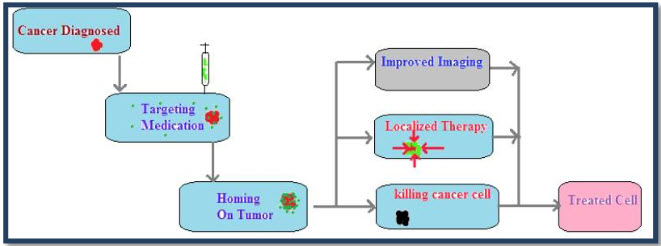
FIGURE 8:NANOPARTICLES AS DIAGNOSTIC TOOLS
Biomedicine
Nanoparticles are very small in size and dimension. Nanoparticles can be coated with the biological molecules which provides the ability to interact with specific target site. Nanoparticles have also some magnetic properties by which it can be employed by the existing peripheral magnetic field. These features are helpful for the penetration power of the nanoparticles. In the field of biomedicine nanoparticles useful as the magnetic drug carrier, targeting studies, cell labelling and separator designing.[13]
DISCUSSION
Nanobiotechnology is an elementary division of contemporary nanotechnology. It provides the fields of substantial discipline receiving world-wideattention due to its effective applications. It is a multidisciplinary methodology for the use of NPs in living systems and in the fields of environmental science, biochemistry, engineering and medicine. The main theme to develop the nanobiotechnology is to development of clean, non-hazardous, and eco-friendly procedures like green synthesis of nanoparticles.[7]Silver NPs have matchless properties, and have globally established applicability in various areas such as medicine, catalysis, and biotechnology. These NPs have important inhibitory belonging to microbial pathogens, so it can widely use as antimicrobial agents. Altered methods have been established to obtain silver NPs of numerous shapes and sizes, together with electron irradiation, laser ablation, chemical reduction, photochemical methods, gamma irradiation, microwave processing, and thermal decomposition.[5]
Nanobiotechnology provides the huge area of research and gives base for the new emerging ideas in the application field of nanoparticles. There are numerous properties of nanoparticles can be identified and techniques developed for fruitful effect consideration such as targeted drug delivery, anticancer agents, development of Nano robots, drug designing, treatment of wastewater. Thus the green synthesis is shown as useful technique for easy and effective synthesis of nanoparticles which are helpful for reduction of usage of harmful chemicals and emerging as environment friendly technology. Silver nanoparticles have numerous physical, chemical, and pharmaceuticals properties. Nanoparticles are applied in many public places like as railway stations in the china. It has been assumed that silver nanoparticles causes the cell lysis or prevent cell transduction for the inactivation of the activity of microorganisms.
CONCLUSION
There are many ways to synthesize the silver nanoparticles which includes physical method, chemical method, and biological approaches. The physiochemical approaches are much costly and involves the use of toxic chemical which is not so effective process. Thus plants extracts are used for effective synthesis of nanoparticles. Nanoparticles have antimicrobial, anti-inflammatory, anti-oxidant and anti-cancerous properties. So in new era of researches it opens the door for the new concepts and new ideas.
REFERENCES
1. M Ramya and M Sylvia Subapriya; Green synthesis of silver nanoparticles; International Journal of Pharma Medicine and Biological Sciences; 2012; 1 (1); 54-61
2. S.Iravani, H. Korbekandi, S.V. Mirmohammadi and B. Zolfaghari; Synthesis of silver nanoparticles: chemical, physical and biological methods;Research in pharmaceutical sciences;2014;9;(6); 385-406
3. R.R Bhosale, A.S. Kulkarni, S.S. Gilda, N.H. Aloorkar, R.A. Osmani and B.R. Harkare; Innovative Eco-friendly Approaches for Green Synthesis of Silver Nanoparticles; International Journal of Pharmaceutical Sciences and Nanotechnology;2014;7(1); 2328-2337
4. AbdulHameed.M.Al-Samarrai; Nanoparticles as Alternative to Pesticide in Management Plant Diseases - A Review; International Journal of Scientific and Research Publications; 2012; 2 (4); 1-4
5. Abhishek Kaler, Navin Patel, Uttam Chandra Banerjee; Green synthesis of silver nanoparticles; current research & information on pharmaceuticals sciences (CRIPS);2010; 11(4); 68-71
6. Sukumaran Prabhu and Eldho K Poulose; Silver nanoparticles: mechanism of antimicrobial action, synthesis, medical applications, and toxicity effects; International Nano Letters; 2012;32(2); 1-10
7. Ana Cauerhff, Guillermo R. Castro; Bionanoparticle, A Green Nanochemistry Approach; Electronic Journal Of Biotechnology;2013; 16(3); 1- 10
8. Gurunathan S, Wu C, Freidag B; DNA vaccines: a key for inducing long-term cellular immunity; Curr. Opin. Immunol;2000; 12(4); 442-447
9. Panyam J, Zhou WZ, Prabha S, Sahoo SK, Labhasetwar V; Rapid endo-lysosomal escape of poly (DL- Lactide-co-glycolide) nanoparticles implication for drug and gene delivery; 2002; 16(10); 1217-1226
10. Kholoud M, Abou El-Nour, Ala’a Eftaiha, Abdulrhman Al-Warthan, Reda A.A. Ammar; Synthesis And Application Of Silver Nanoparticles;Arabian Journal of Chemistry; 2010; 3(3); 135–140
11. Igor Pantic; Magnetic nanoparticles in cancer diagnosis and treatment, novel approach; Rev.Adv.Mater.Sci; 2010; 26; 67-73
12. Jitendra kawadkar, Meenakshi k.Chauhan, and Maheshwari Maharana; Nanobiotechnology Application of Nanotechnology In Diagnosis, Drug discovery And Drug Development; 2010; 1(4) 23-28
13. Q A Pankhurst, J Connolly, S K Jonesand J Dobson; Applications of magnetic nanoparticles in biomedicine; J. Phys. D: Appl. Phys; 2003; 36(13); 167–181.
REFERENCE ID: PHARMATUTOR-ART-2359
|
PharmaTutor (Print-ISSN: 2394 - 6679; e-ISSN: 2347 - 7881) Volume 3, Issue 9 Received On: 04/05/2015; Accepted On: 13/05/2015; Published On: 01/09/2015How to cite this article: R Kumar, VP Singh, D Maurya, AK Pandey; Bionanoparticles: A Green Nanochemical Approach; PharmaTutor; 2015; 3(9); 28-35 |
NOW YOU CAN ALSO PUBLISH YOUR ARTICLE ONLINE.
SUBMIT YOUR ARTICLE/PROJECT AT editor-in-chief@pharmatutor.org
Subscribe to Pharmatutor Alerts by Email
FIND OUT MORE ARTICLES AT OUR DATABASE



